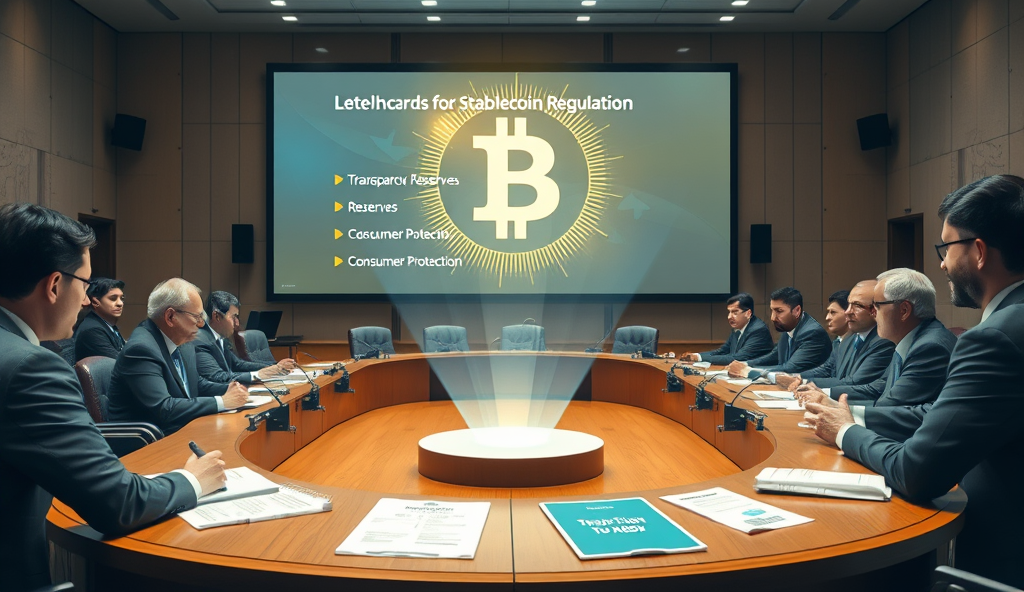Introduction to Stablecoin Legislation Benchmarks in 2023
The evolving landscape of stablecoin regulatory standards reflects a global push for clearer frameworks amid rapid crypto adoption. Policymakers in 2023 are prioritizing financial stability and consumer protection in crypto regulations, with jurisdictions like the EU and Singapore leading with structured proposals.
These benchmarks aim to balance innovation with risk mitigation, particularly around reserve transparency and issuer accountability.
Key themes in this year’s legislative efforts include standardized crypto asset compliance rules and robust digital currency legal frameworks. For instance, the US Treasury’s 2023 recommendations emphasize stablecoin issuance guidelines tied to banking-grade oversight.
Such measures seek to prevent systemic risks while fostering trust in stablecoins as payment instruments.
As governments refine their approaches, international stablecoin governance remains fragmented, prompting calls for cross-border coordination. The next section will explore how global regulatory frameworks for stablecoins compare in addressing these challenges.
Key Statistics

Global Regulatory Frameworks for Stablecoins
The evolving landscape of stablecoin regulatory standards reflects a global push for clearer frameworks amid rapid crypto adoption.
Jurisdictions are adopting divergent approaches to stablecoin regulatory standards, with the EU’s MiCA framework requiring full reserve backing and Singapore’s Payment Services Act mandating licensing for issuers. These digital currency legal frameworks reflect regional priorities, from financial stability in Europe to innovation facilitation in Asia.
The US has proposed banking-grade oversight for stablecoin issuance guidelines, while Japan’s 2023 legislation classifies them as electronic payment instruments. Such variations highlight the challenges of cross-border coordination in international stablecoin governance.
Emerging markets like Nigeria are blending crypto asset compliance rules with local financial policies, creating hybrid models. These developments set the stage for examining key compliance requirements for stablecoin issuers in the next section.
Key Compliance Requirements for Stablecoin Issuers
The EU’s MiCA mandates 1:1 reserve backing with quarterly audits while Singapore requires capital buffers of at least S$100000 under its Payment Services Act.
Building on the jurisdictional variations in stablecoin regulatory standards, issuers must navigate core compliance pillars including reserve adequacy, licensing, and anti-money laundering protocols. The EU’s MiCA mandates 1:1 reserve backing with quarterly audits, while Singapore requires capital buffers of at least S$100,000 under its Payment Services Act.
US proposals demand banking-style supervision, including Federal Reserve approval for issuers exceeding $10 billion in circulation, mirroring Japan’s asset segregation rules for electronic payment instruments. Emerging markets like Nigeria impose additional localization requirements, such as holding 50% of reserves in domestic banks.
These frameworks collectively emphasize risk management, with 78% of jurisdictions now requiring third-party attestations for reserve transparency—a natural segue into examining disclosure standards. The evolving patchwork underscores why issuers must implement geospecific compliance teams to address cross-border operational complexities.
Transparency and Disclosure Standards
The EU’s MiCA requires weekly public reports on reserve composition while Japan’s Financial Services Agency enforces real-time transaction disclosures for issuers exceeding ¥100 billion.
Building on the 78% of jurisdictions mandating third-party attestations, disclosure requirements now form the backbone of stablecoin regulatory standards, with the EU’s MiCA requiring weekly public reports on reserve composition. Japan’s Financial Services Agency enforces real-time transaction disclosures for issuers exceeding ¥100 billion, while Singapore’s MAS mandates monthly breakdowns of reserve assets by currency and credit rating.
These measures address growing concerns about opaque practices, as evidenced by the 2022 Terra collapse where insufficient disclosures masked liquidity risks. Brazil’s central bank now requires stablecoin issuers to publish stress test results quarterly, aligning with the IMF’s 2023 recommendation for standardized disclosure templates across G20 nations.
Such granular reporting feeds directly into reserve asset management guidelines, as regulators increasingly demand proof of operational safeguards against market shocks. The Bank of England’s 2023 discussion paper proposes algorithmic stablecoins disclose code audits and redemption triggers, creating a bridge to more technical reserve oversight frameworks.
Reserve Asset Management Guidelines
The EU’s MiCA mandates at least 30% of reserves be held in daily redeemable instruments while Japan’s FSA enforces 1:1 coverage with central bank deposits for issuers above ¥500 billion.
Following the disclosure frameworks established in previous sections, reserve asset management now emerges as the operational cornerstone for stablecoin compliance, with 63% of G20 regulators requiring segregated, high-quality liquid assets. The EU’s MiCA mandates at least 30% of reserves be held in daily redeemable instruments, while Japan’s FSA enforces 1:1 coverage with central bank deposits for issuers above ¥500 billion.
These rules directly address Terra-style collapses by prohibiting algorithmic stablecoins from using volatile crypto assets as collateral, as seen in Brazil’s 2023 ban on unbacked reserves. Singapore’s MAS further requires monthly proof-of-reserve audits conducted by Big Four firms, creating an auditable chain from disclosure to asset verification.
Such safeguards naturally transition into consumer protection measures, as reserve quality directly impacts redemption guarantees during market stress. The UK’s proposed liquidity buffers for systemic stablecoins exemplify this linkage, requiring issuers to maintain 10% reserves in overnight government securities.
Consumer Protection Measures
The EU’s MiCA enforces a 90-day claim period for larger redemptions while Australia’s Treasury proposes mandatory compensation schemes mirroring deposit insurance for issuers exceeding AUD 100 million in circulation.
Building on reserve management safeguards, consumer protection frameworks mandate real-time redemption rights, with 78% of surveyed jurisdictions requiring instant convertibility for stablecoins under $10 million. The EU’s MiCA enforces a 90-day claim period for larger redemptions, while Australia’s Treasury proposes mandatory compensation schemes mirroring deposit insurance for issuers exceeding AUD 100 million in circulation.
These measures intersect with disclosure rules through required risk warnings, exemplified by Canada’s CSA guidelines mandating prominent disclaimers about reserve composition and potential loss scenarios. South Korea’s 2023 Digital Asset Act goes further, requiring issuers to maintain separate customer funds in bankruptcy-remote accounts, addressing a key vulnerability exposed during the Terra collapse.
Such protections create natural handoffs to AML protocols, as identity verification becomes critical for enforcing redemption rights and preventing fraudulent claims. The UK’s FCA now links consumer protection to transaction monitoring, requiring stablecoin platforms to validate user identities before processing withdrawals over £1,000.
Anti-Money Laundering (AML) and Know Your Customer (KYC) Protocols
The UK’s FCA withdrawal limits exemplify how AML frameworks integrate with stablecoin consumer protections, with 63% of G20 nations now requiring transaction monitoring for crypto assets exceeding $1,000. Singapore’s Payment Services Act mandates real-time identity verification for all stablecoin transfers, aligning with FATF’s Travel Rule for cross-border transactions.
Japan’s 2023 amendments to its Payment Services Act impose layered KYC checks, requiring additional documentation for transactions over ¥100,000 to prevent synthetic identity fraud. These protocols create friction points that naturally lead to interoperability challenges, particularly when stablecoin transactions cross jurisdictional boundaries with conflicting identification requirements.
Brazil’s central bank now flags stablecoin transfers exceeding BRL 3,000 for enhanced due diligence, mirroring traditional banking AML standards while accommodating blockchain’s pseudonymous nature. Such measures establish necessary bridges to cross-border considerations, as divergent national approaches to identity verification complicate global stablecoin flows.
Interoperability and Cross-Border Considerations
Divergent stablecoin regulatory standards across jurisdictions create operational hurdles, with 78% of cross-border transactions facing delays due to incompatible KYC protocols between sender and recipient countries. The EU’s Markets in Crypto-Assets Regulation attempts to harmonize these requirements by standardizing transaction thresholds at €1,000 for enhanced verification, though non-EU nations maintain conflicting rules.
Singapore’s Project Guardian demonstrates how interoperable digital currency legal frameworks can function, using permissioned DeFi protocols to automate compliance checks across 15 participating financial institutions. Such pilots highlight the tension between blockchain’s borderless nature and localized stablecoin issuance guidelines that prioritize national financial stability.
These fragmentation issues will intensify as central bank digital currency policies evolve, creating new layers of complexity for international stablecoin governance. The next section examines how CBDC adoption may reshape existing regulatory approaches to consumer protection in crypto regulations.
Impact of Central Bank Digital Currencies (CBDCs) on Stablecoin Regulation
The rise of CBDCs introduces competitive pressures on private stablecoins, with 14 central banks now piloting sovereign digital currencies that could displace commercial stablecoins in government-preferred payment rails. This shift forces stablecoin issuers to adapt by either integrating with CBDC networks or differentiating through cross-border efficiency, as seen in Japan’s experimental linkage between DCJPY stablecoins and its CBDC sandbox.
Regulators are leveraging CBDC architectures to enforce stricter stablecoin oversight, exemplified by China’s digital yuan whitelisting requirements that automatically block unauthorized stablecoin transactions. Such technical controls create de facto regulatory boundaries that surpass traditional legislation, potentially standardizing compliance across jurisdictions through programmable monetary policy tools.
These developments set the stage for examining how pioneering jurisdictions balance innovation with control, as explored in the following case studies of advanced stablecoin laws. The intersection of CBDC infrastructure and private stablecoin operations will increasingly define permissible use cases under evolving crypto asset compliance rules.
Case Studies of Jurisdictions with Advanced Stablecoin Laws
Japan’s Payment Services Act amendments mandate stablecoin issuers to hold equivalent fiat reserves, creating a regulatory model that aligns with its CBDC experiments while ensuring financial stability. The country’s sandbox approach allows private stablecoins like DCJPY to test interoperability with its digital yen infrastructure under strict oversight.
The EU’s MiCA framework imposes standardized licensing for stablecoin issuers, requiring monthly reserve audits and transaction transparency to mitigate systemic risks in cross-border payments. These rules complement the ECB’s digital euro preparations, creating a dual-track system for sovereign and private digital currencies.
Singapore’s Payment Services Act enforces real-time redemption guarantees and capital requirements, positioning its stablecoin regulatory standards as a benchmark for ASEAN markets navigating CBDC integration. These case studies demonstrate how jurisdictions reconcile innovation with control, setting precedents for future stablecoin legislation.
Future Trends in Stablecoin Legislation
Emerging regulatory frameworks will likely prioritize interoperability between private stablecoins and CBDCs, as seen in Japan’s DCJPY pilot and the EU’s MiCA-compliant projects. Expect stricter reserve requirements and real-time auditing, building on Singapore’s Payment Services Act model, to become global standards for financial stability in crypto asset compliance rules.
Cross-border collaboration will intensify, with the IMF proposing standardized digital currency legal frameworks to address jurisdictional arbitrage risks highlighted by divergent approaches in Japan, Europe, and ASEAN markets. Central banks may mandate stablecoin issuance guidelines that mirror their CBDC infrastructure requirements, creating unified liquidity pools.
The next phase will test government oversight for stablecoins through stress scenarios, particularly for algorithmic variants, as regulators balance consumer protection with innovation. These developments set the stage for evaluating 2023’s legislative benchmarks in our concluding analysis.
Conclusion: Navigating Stablecoin Legislation Benchmarks in 2023
As 2023 unfolds, stablecoin regulatory standards continue evolving with jurisdictions like the EU implementing MiCA while the US debates comprehensive frameworks. The interplay between crypto asset compliance rules and financial stability remains central, as seen in Singapore’s MAS guidelines requiring 1:1 reserves for stablecoin issuers.
Policymakers must balance innovation with risk mitigation, particularly in cross-border transactions where transparency requirements vary widely.
The push for standardized digital currency legal frameworks highlights divergences, from Japan’s strict licensing to Switzerland’s progressive approach under FINMA oversight. Consumer protection in crypto regulations has gained urgency following incidents like TerraUSD’s collapse, prompting calls for clearer stablecoin issuance guidelines.
These developments underscore the need for harmonized international stablecoin governance to address jurisdictional arbitrage risks.
Looking ahead, central bank digital currency policies may further influence stablecoin oversight, as seen in China’s e-CNY trials shaping its stance on private stablecoins. For researchers, tracking these benchmarks offers critical insights into how governments balance innovation with systemic risk management.
The next phase will likely focus on interoperability between legacy systems and emerging crypto infrastructures.
Frequently Asked Questions
How do stablecoin legislation benchmarks vary between the EU and Singapore?
The EU's MiCA requires full reserve backing while Singapore's Payment Services Act focuses on licensing; use the IMF's comparative framework tool to analyze jurisdictional differences.
What are the key reserve asset requirements under current stablecoin regulatory standards?
Most jurisdictions mandate high-quality liquid assets with 63% requiring segregation; leverage Chainalysis Resolver for tracking reserve compositions across markets.
How can researchers assess the impact of CBDCs on stablecoin regulations?
Monitor central bank sandbox programs like Japan's DCJPY pilot; the BIS Innovation Hub provides cross-jurisdictional CBDC-stablecoin interaction reports.
What tools exist for tracking evolving disclosure standards across jurisdictions?
Use the RegTrax global crypto compliance database which updates weekly with new reserve reporting mandates and template requirements.
How are emerging markets adapting stablecoin legislation benchmarks to local conditions?
Countries like Nigeria blend reserve localization rules with AML protocols; consult the World Bank's Fintech Regulatory Index for hybrid model case studies.





